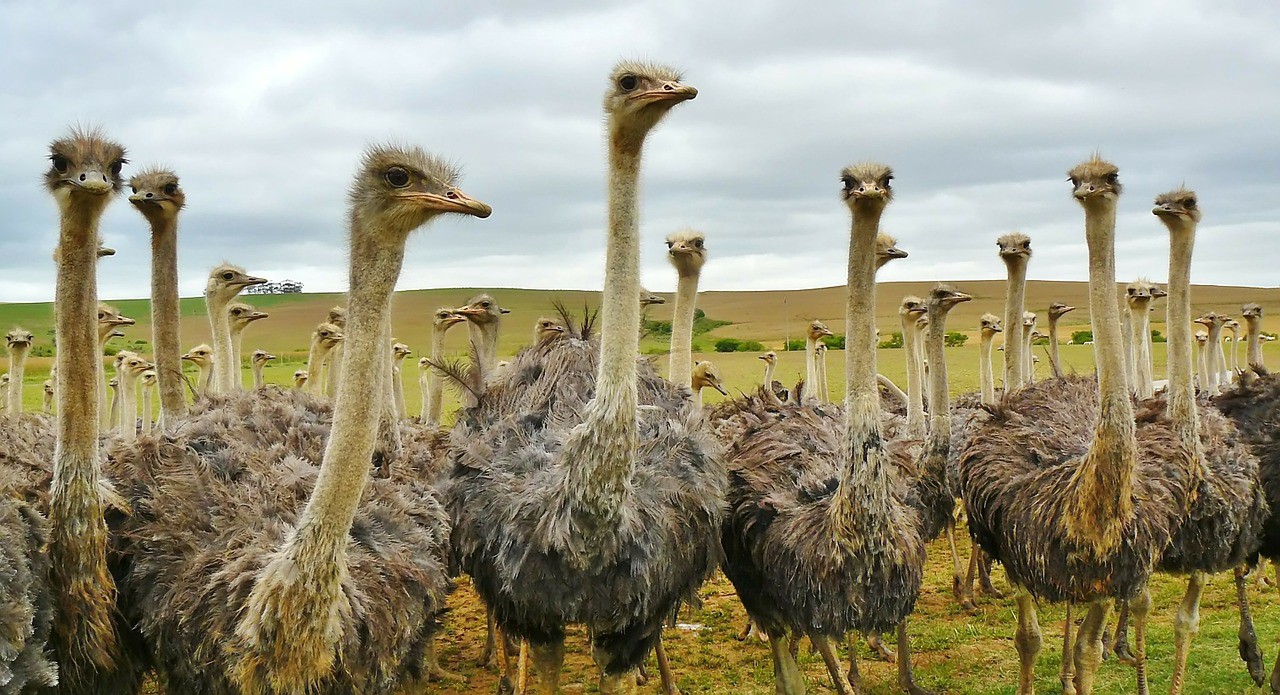
At $30?50 an egg, an ostrich is the closest thing to a Golden Goose that you can raise.
In my new series, Unconventional Profit, I will be detailing unconventional business models that make a surprising amount of money. You will never think of profit in the same way again, and you may just find your next venture!
In this entry of Unconventional Profit, I will go over my latest ?feather-brained? scheme.
When I was younger, my family frequently visited my grandparents in central Florida and during these trips it was not uncommon to pass an ostrich farm on the way. As somewhat of an aspiring urban farmer, I have only begun to look at raising animals as a profitable venture and have instead concerned myself with the practical aspects of raising animals: eggs, meat and dairy. My experiences with smaller animals (quail and rabbits) has led me to look at larger livestock.
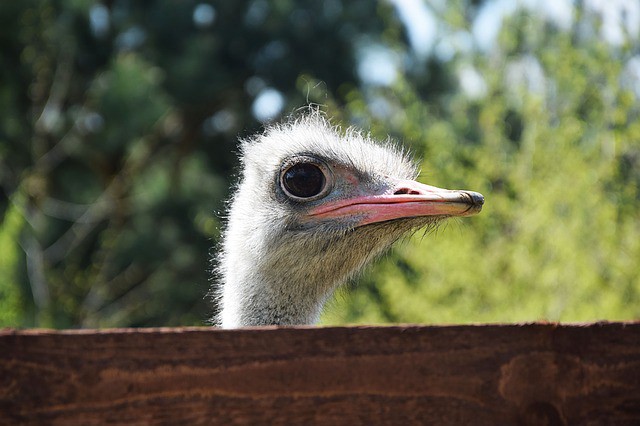
I have found through my research, that ostrich farming can be incredibly profitable!
The ostrich, a ratite (which is a flightless bird), is a large bird that can reach 250 lbs and 9.2 ft in height. They use their wings primarily for communication and balance when running (top speeds at 40MPH).
Appreciation Over Time
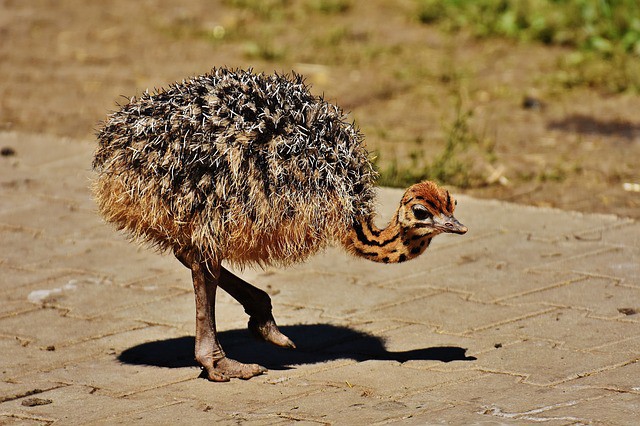
An ostrich chick from 30?60 days old costs around $525, according to ostrichgrowers.com, appreciating to almost twice that after 90 days. Yearlings run about $2500/bird, with adult birds running from $7500 to over $10000.
Eggs

Fresh ostrich eggs for eating sell for about $35?50 a piece. A single ostrich egg is the equivalent of 2-dozen chicken eggs! According to the American Ostrich Association, a single bird can lay 40?60 eggs a year. Some cross-breeds have even been known to average 70 eggs a year! At 50 eggs a year for $40/egg, each ostrich can give you an extra $2000/year. An ostrich can lay eggs for about 30 years. Over the life of an ostrich that?s $60000!
That?s just for non-fertile eggs. A fertile egg can be sold for as much as $100!
Meat
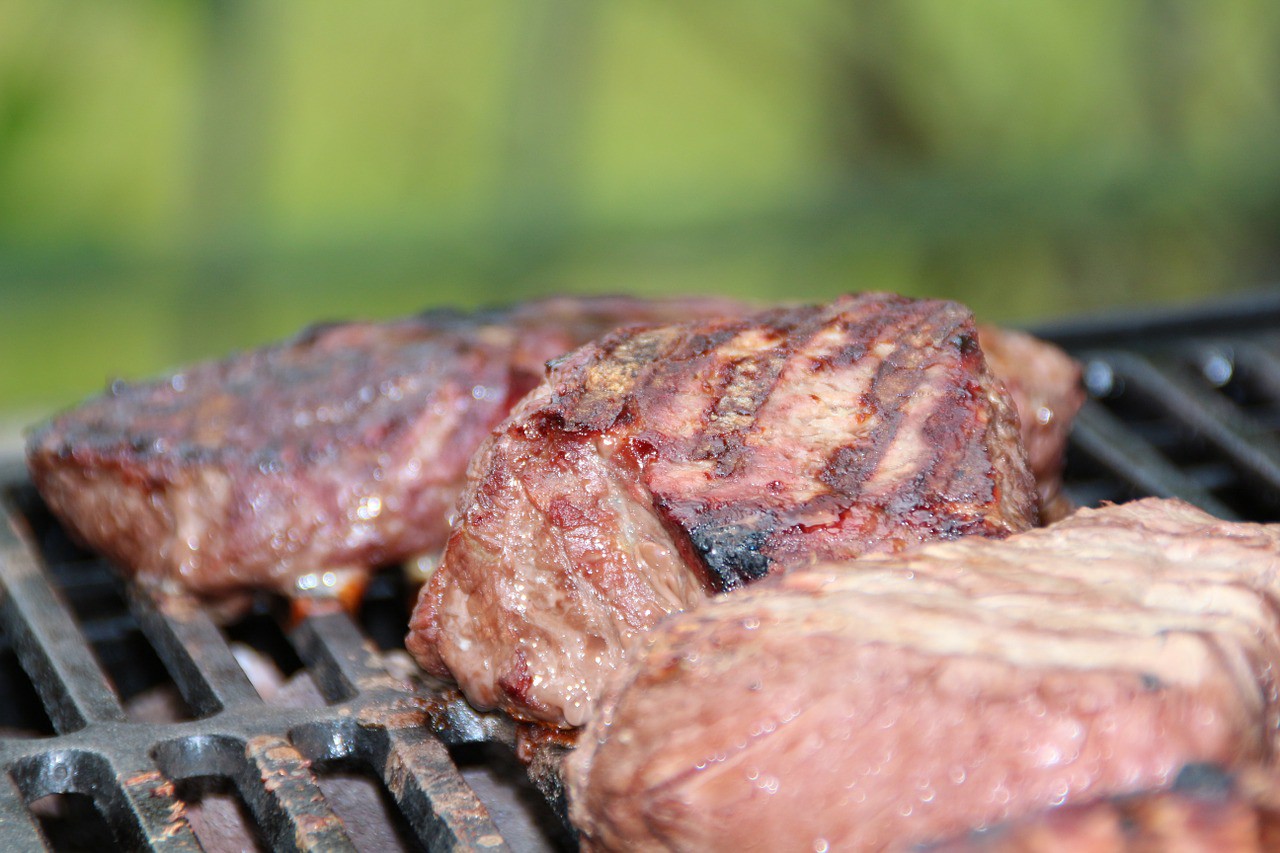
The average ostrich, typically butchered at 14 months of age, will produce about 75?130 lbs of meat. Ground ostrich meat ranges from $10?15/lb, with filets at $25?50/lb and tenderloins upwards of $50/lb. At the average wholesale price of $20/lb, that?s a minimum of $1500 per bird.
Feathers and Leather
Another ostrich product that is in high demand is leather and feathers for fashion items. NC State University?s College of Agriculture and Life Sciences estimates that the average bird will produce 14 sq. ft. of leather at $40/SF and 4 lbs of feathers at $40/lb. That?s $1470 per bird!
Revenues and Expenses
The estimated cost to raise an ostrich is $50/month for chicks, $75/month for yearlings and $100/month for adults (2 years and older). This includes vet costs, feeding and general upkeep. Other expenses include fencing and land costs, as well as the initial cost of purchasing the birds.
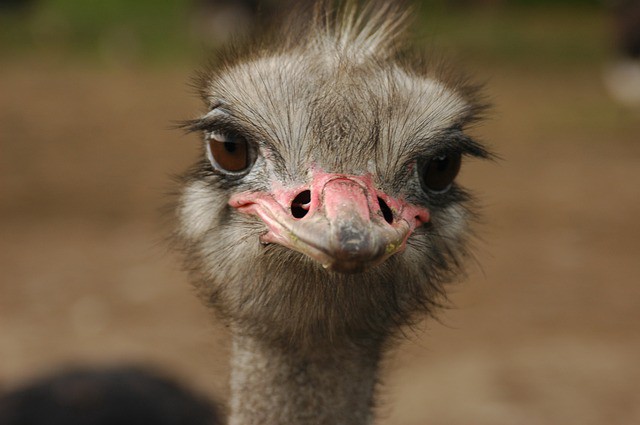
I?ve created a chart detailing out the potential profits over 4 years.
This chart is assuming you buy 4 newly-hatched chicks (one male, three females) and raise them for the next 4 years. I also assume that you have the space and fencing in place to house them, as these costs can vary greatly depending on where you live, material costs, etc.

The first two years are pretty straightforward. The profit line at the end of each year shows how much total profit you would make if you sold the ostriches at the end of the year (so the profit calculation from year 2 takes into account the expenses from year 1). The only expenses are upkeep and the initial costs of buying the birds. Again, I did not factor in fencing and space for the animals as the costs are highly variable.
The third year gets more interesting, as the birds are now old enough to lay eggs. Here is the chart I used to put together the numbers for year 3. I assume 50 eggs per female, with 10% of the eggs set aside for hatching and 10% for selling to others for hatching. From everything I?ve found, the hatch rate is roughly 80%, so out of the 15 set aside for hatching, we can reasonably expect 12 to hatch. At an incubation period of 45 days, we can expect 8 eggs to hatch in one year. While you could realistically incubate all of your hatching eggs the first month and increase your ?yield? and value at the end of the year, I felt that this method was more conservative.
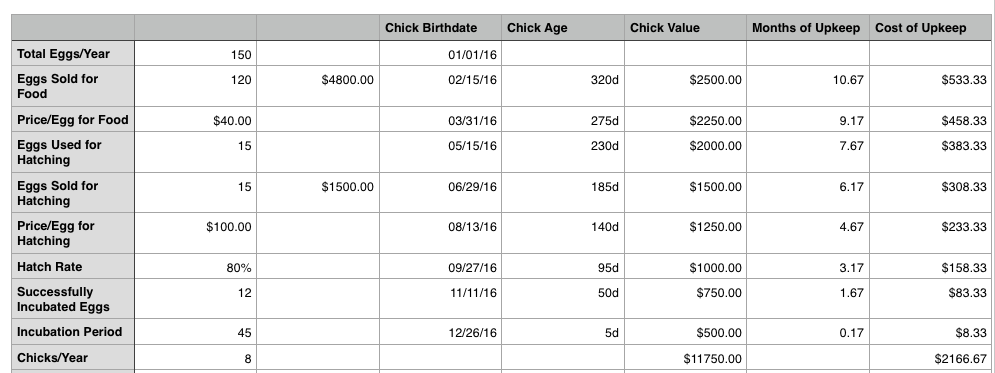
As you can see, at the end of year 3, the total profit would be $30583.33, with $6300 being from egg sales. That leaves a total of $24283.33
http://jaredwillis.com/wp-content/uploads/2016/09/Screen-Shot?2016?09?09-at?9.40.10-PM.png
$30,000 over 3 years? That doesn?t sound like a quick way to make money. It?s not, but remember, we?ve been conservative with the numbers. Let?s take a look at year 4 now. Again, being conservative, I have assumed no new chicks hatched and am just factoring in the value of the chicks over the year. In this scenario, I am assuming 80% of the eggs sold are for consumption, and 20% are sold for hatching.
Here is the chart showing the value of the chicks at the end of year 4.
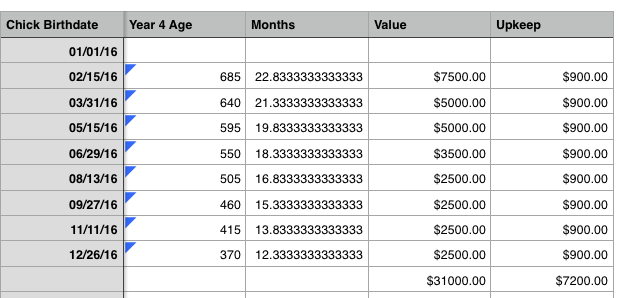
Here is the year 4 profit chart:
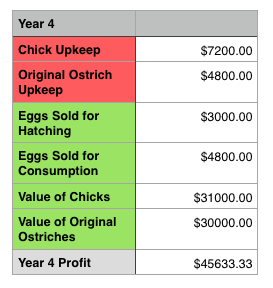
At the end of year 4, if you sell everything you will have made $45633.33.
Conclusion
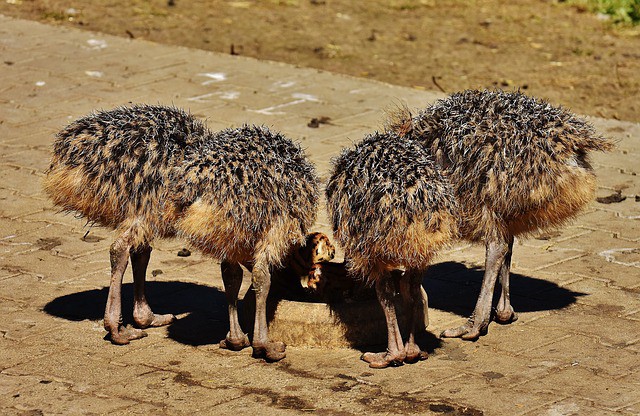
This is a compounding business, and it is only limited by the space you have available for the animals. You could sell the chicks for $31000 or breed half (and increase your egg and chick production) and sell half. There are a lot of different and creative ways to optimize your returns in this business. In the above model, I didn?t even get into the meat, leather, and feather markets. I have included some additional resources below that I used to guide my research.
Additional Resources
American University ? Ostrich Farming http://www1.american.edu/ted/ostrich.htm
Texas A&M University ? Ostrich Production http://agrinet.tamu.edu/KB/Enciclopedias/ostriches.html


